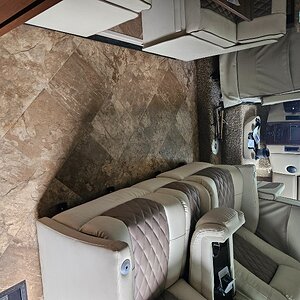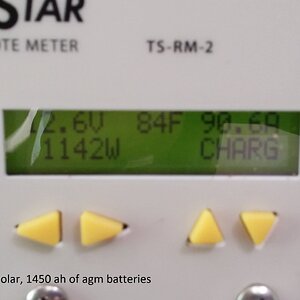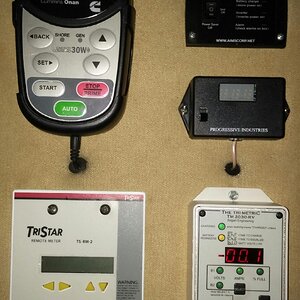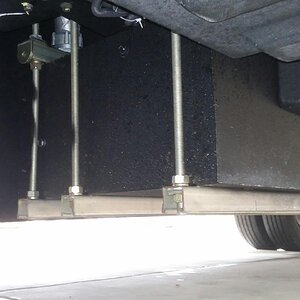Just came back from a long weekend in the mountains, and we had a cold night, and in the morning there was not enough power left to run the heater. There was also a prohibition to run the generator early in the morning, so we had to spend a couple of cold hours. WE had the same problem in one of the last outings, but in that case the battery just lasted long enough
That brought up a few questions that I am trying to find an answer to. oes anybody know what the power requirements of the major users are (heating, fridge (on LP gas), lights,...). If I am not mistaken a typical RV battery has a capacity for 100 Ah (at 12V), so about 1.2 KWh. That would run a 12 W light for roughly 100 hours. But how much do the other things use? Is it normal for a battery to be empty in the morning (with some lights on in the evening)?
Also: How long does it take to charge the battery with a generator. I have a 4KW generator, but I don't think I can charge the battery in 20 Minutes. My guess is that the charging current is limited, so running the generator just to recharge the battery so that the heater can run is a colossal waste of energy (and gas).
the second question relates to the batteries themselves. My RV has a lead acid battery. One option to extend the battery life would be to add additional batteries. I have seen some Lithium-Ion batteries advertised. Is it possible to mix lead-acid and LI batteries, or is that a bad idea.
Finally, there are some Uninterruptible Power supplies for computers available that are rated at around 1.5 KW, and they are a lot cheaper than the batteries. Obviously they can't be installed under the RV, but has anybody used them as a backup? Charge them at home, put them in the RV, when the battery is low, plug the shore line into the UPS and use it until it is empty, or until one can fire up the generator. Then the generator has enough power to charge both the battery and the UPS. and when driving the RV, a small portable inverter could be used to recharge the UPS (not the most efficient way: create 12V, convert to 110, reduce to 12 V to recharge theUPS batteries, then convert to 110V again when needed, and convert back to 12V to run lights, etc.).
One option (when stationary) would be to put the UPS between the generator and the 110 feed for the RV. When the generator is off, the 110V from the UPS would recharge the battery if necessary, and when the generator runs, it would feed the RV and at the same time recharge the UPS.
Wonder what other people have done ...
That brought up a few questions that I am trying to find an answer to. oes anybody know what the power requirements of the major users are (heating, fridge (on LP gas), lights,...). If I am not mistaken a typical RV battery has a capacity for 100 Ah (at 12V), so about 1.2 KWh. That would run a 12 W light for roughly 100 hours. But how much do the other things use? Is it normal for a battery to be empty in the morning (with some lights on in the evening)?
Also: How long does it take to charge the battery with a generator. I have a 4KW generator, but I don't think I can charge the battery in 20 Minutes. My guess is that the charging current is limited, so running the generator just to recharge the battery so that the heater can run is a colossal waste of energy (and gas).
the second question relates to the batteries themselves. My RV has a lead acid battery. One option to extend the battery life would be to add additional batteries. I have seen some Lithium-Ion batteries advertised. Is it possible to mix lead-acid and LI batteries, or is that a bad idea.
Finally, there are some Uninterruptible Power supplies for computers available that are rated at around 1.5 KW, and they are a lot cheaper than the batteries. Obviously they can't be installed under the RV, but has anybody used them as a backup? Charge them at home, put them in the RV, when the battery is low, plug the shore line into the UPS and use it until it is empty, or until one can fire up the generator. Then the generator has enough power to charge both the battery and the UPS. and when driving the RV, a small portable inverter could be used to recharge the UPS (not the most efficient way: create 12V, convert to 110, reduce to 12 V to recharge theUPS batteries, then convert to 110V again when needed, and convert back to 12V to run lights, etc.).
One option (when stationary) would be to put the UPS between the generator and the 110 feed for the RV. When the generator is off, the 110V from the UPS would recharge the battery if necessary, and when the generator runs, it would feed the RV and at the same time recharge the UPS.
Wonder what other people have done ...












